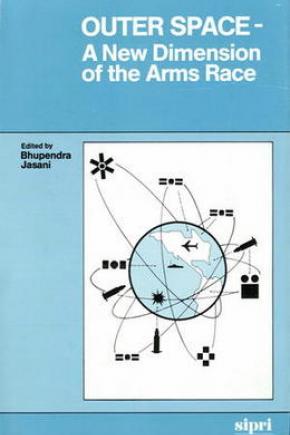Outer Space: A New Dimension of the Arms Race
In the 25 years since the first Sputnik was launched artificial Earth satellites have become extremely important to the military might of the great powers. Space technology is still developing at a very rapid rate and we may well see the advent of weapons by the year 2000 that are at present confined to science fiction books. In addition, developments in satellite technology are encouraging new military doctrines that consider fighting and winning a limited nuclear war—the unthinkable is being thought.
These developments increase the relevance of the July 1982 Second Special Session of the UN General Assembly devoted to disarmament and the August 1982 UNISPACE 82 (the Second UN Conference on the Exploration and Peaceful Uses of Outer Space).
As a contribution to discussions at the conferences SIPRI organized a symposium in Autumn 1981, at which 20 eminent scientists, lawyers and diplomats from 12 different countries took part. The 12 papers presented at the symposium, on satellite technology, monitoring, legal problems and possible arms control measures, are published here, along with a section by Bhupendra Jasani of SIPRI which discusses the technological background to the arms race in outer space and its implications for international security.
Here are some of the absorbing questions tackled:
- How peaceful are weather satellites?
- Could beam weapons in space render nuclear weapons obsolete?
- Do treaty loopholes allow 'defensive' weapons on the Moon?
- Can satellites be international?
- How useful would an ASAT treaty be?
- Is it feasible to ban military use of outer space?
Part I. Military space technology and its implications
B. Jasani
1. Introduction
2. Some basic orbital concepts
3. Space transportation vehicles
4. Military activities in outer space
5. Contribution of space technology to the arms race
6. Satellites for crisis and arms control monitoring
7. Conclusions
Part II. Space technology, crisis monitoring and arms control
1. Reconnaissance satellites
B. G. Bair
2. Identification of military components within the Soviet space programme
G. E. Perry
3. Navigation satellite systems: Their characteristics, potential and military applications
K. D. McDonald
4. System aspects in military satellite communications
E. Biglieri
5. Image analysis and sensor technology for satellite monitoring
T. Sakata and H. Shimoda
6. Information extraction from images
T. Orhaug and G. Forssell
7. The prospects for beam weapons
A. M. Din
8. Orbital BMD and the space patrol
P. J. Nahin
9. Some remarks on US and Soviet strategies concerning manned activities in outer space
H. Kautzleben
10. Recent advances in the use of space for military purposes and on second generation nuclear weapons
M. Felden
11. Use of satellites in crisis monitoring
K. Santhanam
12. Verification using satellites, feasibility of an international or multinational agency
M. Abdel-Hady and A. Sadek
13. What additional arms control measures related to outer space could be proposed?
D. Goedhuis
14. Anti-satellite weapons: the prospects for arms control
D. L. Hafner
15. Banning all weapons in outer space
O. V. Bogdanov
Appendix 1A. Photographic reconnaissance satellites launched between 1977 and 1981
Appendix 1B. Electronic reconnaissance satellites launched between 1977 and 1981
Appendix 1C. Ocean surveillance and oceanographic satellites launched between 1977 and 1981
Appendix 1D. Early warning satellites launched between 1977 and 1981
Appendix 1E. Communications satellites launched between 1977 and 1981
Appendix 1F. Navigation satellites launched between 1977 and 1981
Appendix 1G. Meteorological satellites launched between 1977 and 1981
Appendix 1H. Interceptor/destructor satellites launched between 1977 and 1981
Appendix 2. Six treaties that contain provisions aimed at some form of arms control in space
Appendix 3. Glossary of terms
Appendix 4. Abbreviations

